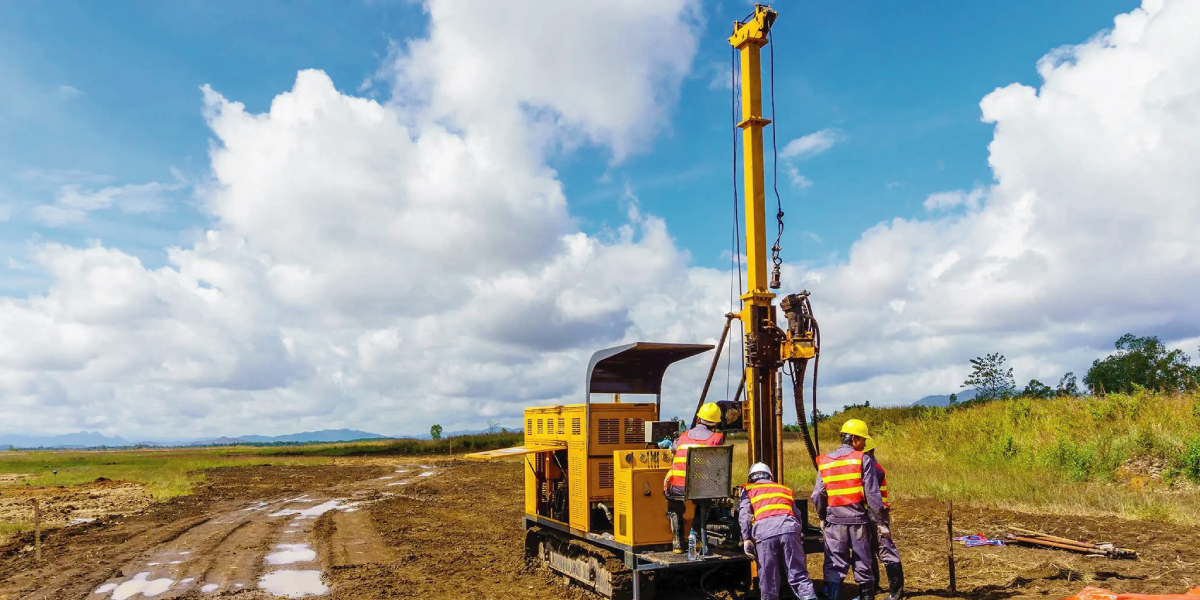Insitu testing plays a crucial role in geotechnical engineering by providing valuable information about the properties of soil and rock directly at the construction site. Unlike laboratory tests, insitu tests are conducted in the field, allowing engineers to assess the conditions of the ground more accurately. This guide explores the various insitu testing methods, their applications, and their significance in construction projects.
1. Standard Penetration Test (SPT)
Description: The Standard Penetration Test involves driving a split-spoon sampler into the ground using a hammer. The number of blows required to drive the sampler a specific distance is recorded.
Applications:
- Used to determine soil density and strength.
- Helps in classifying soil types and understanding stratification.
Significance: SPT results are essential for foundation design and assessing the soil’s bearing capacity.
2. Dynamic Cone Penetrometer Test (DCPT)
Description: The DCPT uses a cone attached to a rod that is driven into the ground by a drop weight. The depth of penetration and the number of blows are measured.
Applications:
- Suitable for evaluating soil strength and stiffness.
- Often used in road construction and site investigations.
Significance: Provides quick and cost-effective assessments of subgrade soil conditions.
3. Plate Load Test
Description: In this test, a rigid plate is placed on the ground and loaded incrementally. The resulting settlement of the plate is measured.
Applications:
- Used to determine the bearing capacity of soil.
- Assists in evaluating the suitability of a site for various structures.
Significance: Results help engineers design foundations and assess potential settlement issues.
4. Vane Shear Test
Description: The Vane Shear Test involves inserting a vane into the ground and rotating it to measure the torque required to shear the soil.
Applications:
- Particularly useful for soft, cohesive soils.
- Helps in determining the undrained shear strength of clays.
Significance: This test is vital for assessing the stability of slopes and excavations.
5. Cone Penetration Test (CPT)
Description: The CPT involves pushing a cone-shaped penetrometer into the soil at a constant rate while measuring resistance and friction.
Applications:
- Used for continuous profiling of soil layers.
- Provides detailed information on soil stratigraphy and strength.
Significance: CPT results are beneficial for foundation design and geotechnical modeling.
6. Geophysical Methods
Description: Geophysical testing includes methods such as seismic refraction, ground penetrating radar (GPR), and electrical resistivity testing to assess subsurface conditions.
Applications:
- Useful for mapping geological features and locating voids or anomalies.
- Helps in environmental assessments and site investigations.
Significance: Non-destructive and efficient, these methods provide a broad overview of subsurface conditions.
7. Pressuremeter Test
Description: The pressuremeter test involves inserting a cylindrical probe into the ground and applying pressure to measure the soil’s deformation.
Applications:
- Determines the in-situ modulus of deformation and lateral stress.
- Suitable for soft and cohesive soils.
Significance: The results are essential for designing foundations and evaluating soil behavior under load.
Conclusion
Insitu testing methods are invaluable tools in geotechnical engineering, providing critical data that informs project design and execution. By understanding the various insitu testing methods available, engineers can select the appropriate tests for their specific project needs. Accurate insitu testing ensures safer, more effective construction practices, ultimately leading to successful project outcomes.


Leave A Comment